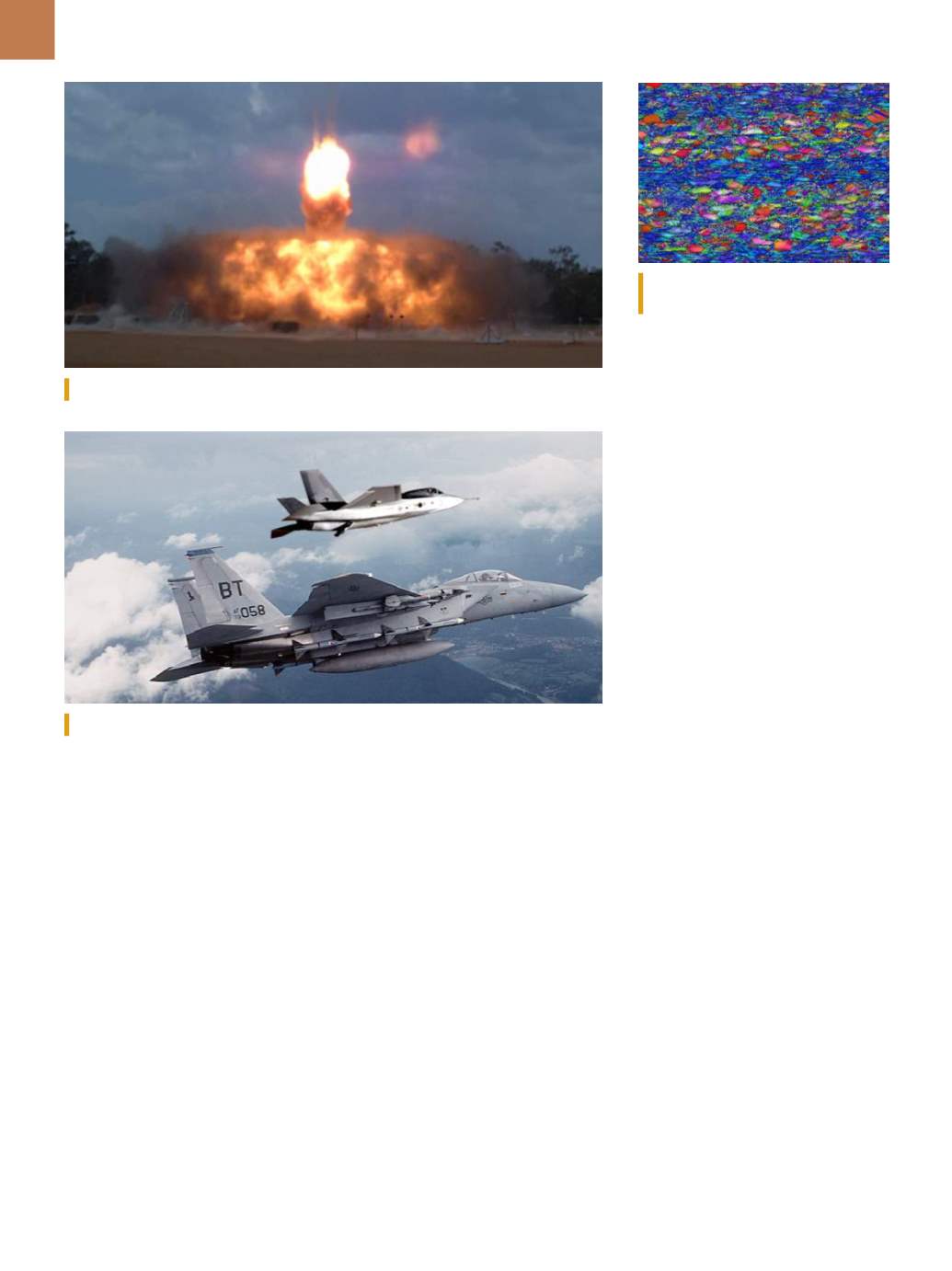

A D V A N C E D M A T E R I A L S & P R O C E S S E S | M A Y 2 0 1 6
3 2
The document explained that the need
for each of these systems requires vary-
ing degrees of automation to improve
decision-making and performance
[4]
.
DOMESTIC RESEARCH
ACTIVITIES
The AFOSR science and engineer-
ing division (RT) is organized into 36 ma-
jor research portfolios divided among
four research divisions: Engineering
and Complex Systems; Information
and Networks; Physical Sciences; and
Biological Sciences
[2]
. The Engineering
and Complex Systems team strives to
shape the future of aerospace sciences
through the discovery and application
of critical fundamental science, includ-
ing the integration and convergence of
multiple scientific disciplines. These
disciplines include but are not limited
to electronics, fluid dynamics, materi-
als, propulsion, and structural mechan-
ics, with an overall aim to enhance the
operational capabilities of AF aerospace
systems.
The information and networks
team supports basic science develop-
ment and application in several AF high
priority areas including cyber security,
big data, and autonomy. Research pro-
grams within this division are organized
into information, decision-making, and
network focus areas, which address crit-
ical issues in mathematics, information,
and network oriented sciences.
The physical sciences team fo-
cuses on advancing AF capabilities in
sensing, characterizing, managing the
operational environment, and devel-
oping devices for new capabilities. The
main research areas involve quantum
matter devices, plasma and high-
energy density physics, optics and elec-
tromagnetics, and aerospace materials.
The chemistry and biological
sciences team manages research on
advancing understanding of fundamen-
tal chemistry, biology, mechanics, and
biophysics sciences. Research focuses
on the hierarchical design of mechani-
cal and functional properties from the
nanoscale through the mesoscale to
provide chemistry/biochemistry, and
material or structural behavior capa-
ble of enhancing mission versatility.
Select research emphasis areas and rel-
evant program officers can be found in
Tables 1-4. The emphasis areas are only
a small subset of potential research
topics. Additional information on
needs and interests are provided on
the AFOSR website under the “Research
Opportunities” tab.
The program officer (PO) is the
key contact person for both interna-
tional and domestic divisions. POs
have autonomous control over their
funding portfolios and complete deci-
sion authority over program execution
decisions within their areas of exper-
tise. Knowing each PO’s research area
of interest is critical to successful grant
writing. Normally awarded to single
researchers for a one- to four-year
period, these grants are funded by par-
ticular portfolios to address relevant
technical needs.
Because new grants are awarded
each year, based on fiscal availability
and current needs, grant writers must
contact the PO as early as possible
in order to refine potential proposal
ideas. Grant writers should provide the
United States Air Force F-15 Aircraft.
Experimental blast test.
High resolution electron back scattered
diffraction image of high strength alloy.


















